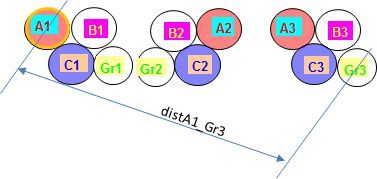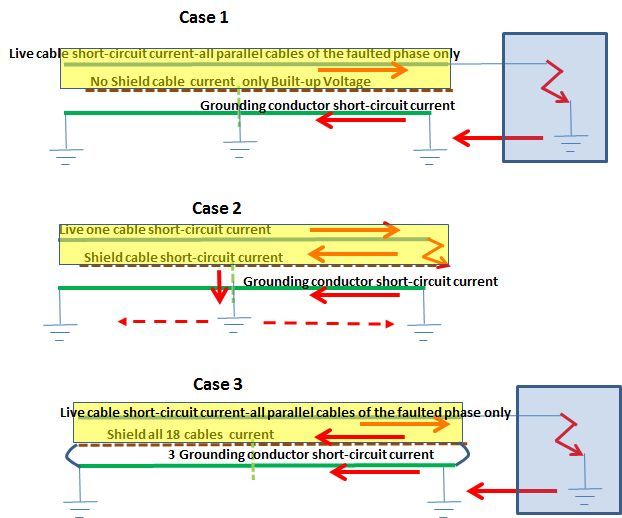Our 69kV underground direct buried cables installation is having a single point bonding system, 3 x 1core-1000MCM cu/XLPE/CuW/Lead/HDPE per phase laid in trefoil formation with associated 1 x 1core - 4/0 cu AWG ground continuity conductor per phase for a span of 2 kilometers, link box with sheath voltage limiter (SVL) is provided at the mid-point of the circuit (1000m). Solidly grounded at both ends.
The cable manufacturer induced voltage calculation at normal condition indicates 0.02 V/m at load current 371 A. During fault conditions we consider 40 kA short circuit fault current. The sheath standing voltage for 3-phase fault is 1.24 V/m which is below our tolerable 5 kVrms, but for single phase to ground fault the manufacturer consider 40 kA fault current and the result is 11.2 V/m that is 11.2 kV at mid-point.
My question: In case of single point bonding system, having 3 cables per phase (trefoil formation), and where system is operated in abnormal condition with only one cable per phase; do we need that the sheath voltage calculation shall take into account the division of any ground fault return current between the three ground continuity conductors?
The cable manufacturer induced voltage calculation at normal condition indicates 0.02 V/m at load current 371 A. During fault conditions we consider 40 kA short circuit fault current. The sheath standing voltage for 3-phase fault is 1.24 V/m which is below our tolerable 5 kVrms, but for single phase to ground fault the manufacturer consider 40 kA fault current and the result is 11.2 V/m that is 11.2 kV at mid-point.
My question: In case of single point bonding system, having 3 cables per phase (trefoil formation), and where system is operated in abnormal condition with only one cable per phase; do we need that the sheath voltage calculation shall take into account the division of any ground fault return current between the three ground continuity conductors?



